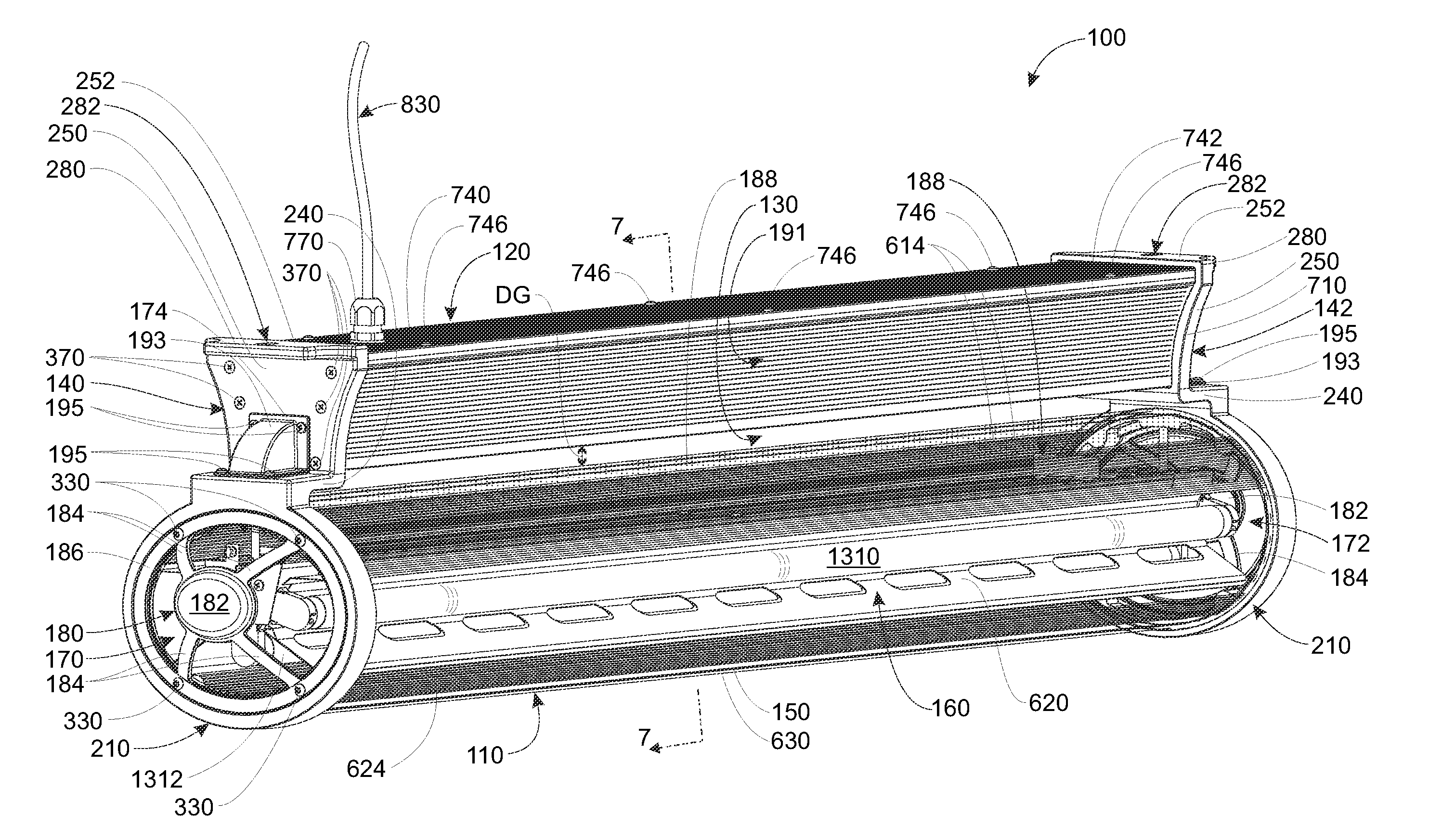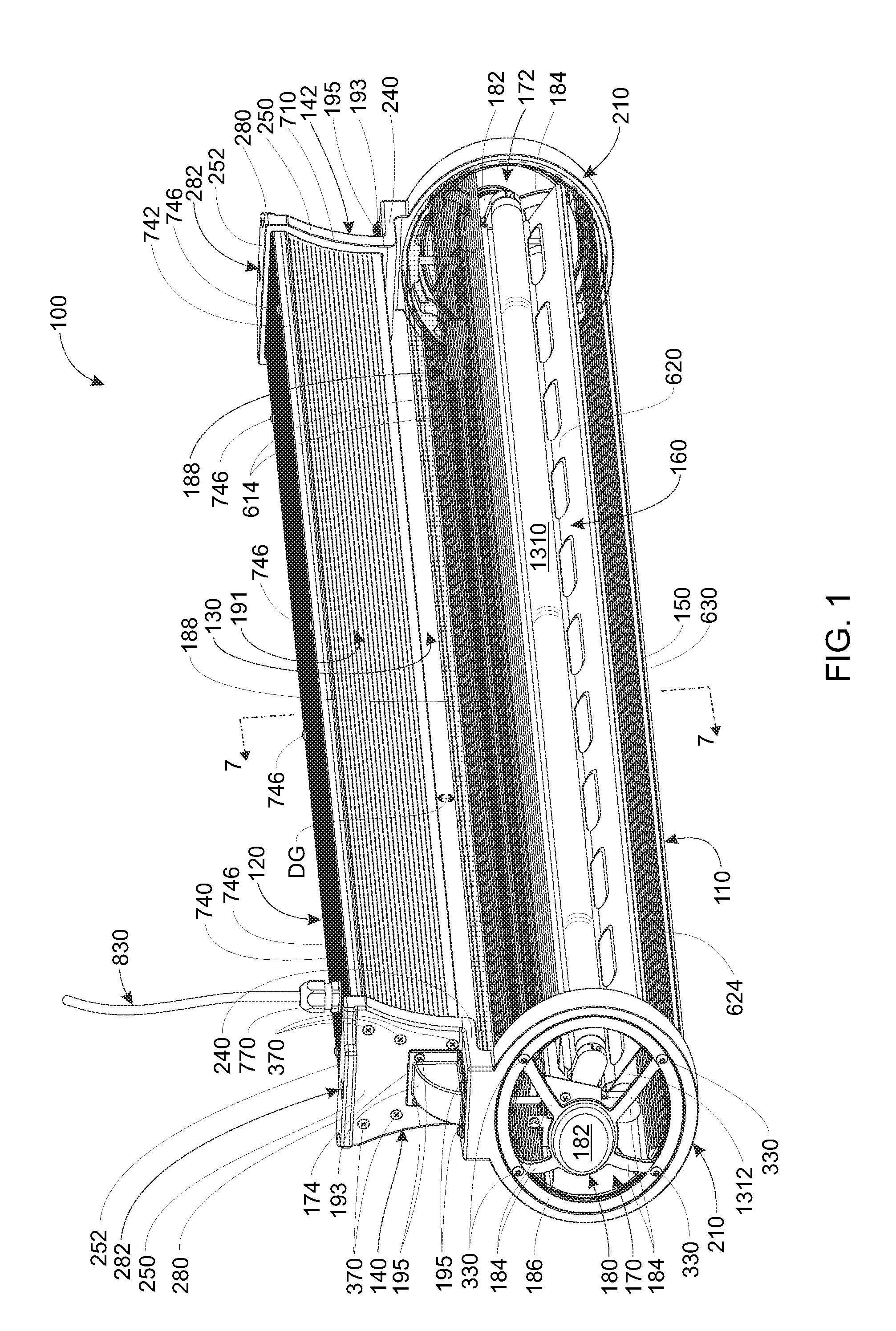Vapor-tight lighting fixture
a technology of lighting fixtures and vapor seals, which is applied in the direction of gas-filled discharge tubes, gas-tight/water-tight arrangements, electric circuit arrangements, etc., can solve the problems of aging, fading of the lens, and eventual failure of wiring and electronics, so as to eliminate cumulative thermal load, easy and individually accessible for service, and easy to remove and repla
- Summary
- Abstract
- Description
- Claims
- Application Information
AI Technical Summary
Benefits of technology
Problems solved by technology
Method used
Image
Examples
Embodiment Construction
[0034]I. Structural Overview
[0035]A luminaire (light fixture) according to an illustrative embodiment is shown in assembled form in FIG. 1 and in exploded view (with reflector and lamp assembly omitted) in FIG. 3. This novel luminaire 100 includes a main light source housing 110 (also termed “main housing” or “lower housing”) and an electronics and / or ballast housing 120 (also termed “upper housing”) that is suspended above and separated from the main housing 110 with a gap or airspace 130 that runs the length of each housing between opposing housing end structures (or “housing ends”) 140 and 142. The housing ends 140, 142, maintain the alignment between the upper and lower housings and provide the units overall structural integrity as described further below. Illustratively, the gap 130 has a vertical distance DG between the confronting housing surfaces of approximately ¼ to 1½ inches. Other gap distances are expressly contemplated. The gap is generally small enough to prevent wild...
PUM
| Property | Measurement | Unit |
|---|---|---|
| thickness | aaaaa | aaaaa |
| length | aaaaa | aaaaa |
| thickness | aaaaa | aaaaa |
Abstract
Description
Claims
Application Information
 Login to View More
Login to View More - R&D
- Intellectual Property
- Life Sciences
- Materials
- Tech Scout
- Unparalleled Data Quality
- Higher Quality Content
- 60% Fewer Hallucinations
Browse by: Latest US Patents, China's latest patents, Technical Efficacy Thesaurus, Application Domain, Technology Topic, Popular Technical Reports.
© 2025 PatSnap. All rights reserved.Legal|Privacy policy|Modern Slavery Act Transparency Statement|Sitemap|About US| Contact US: help@patsnap.com



